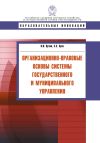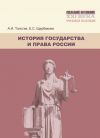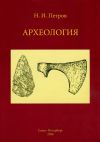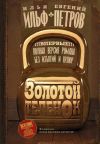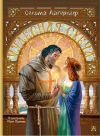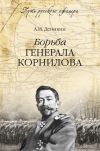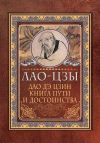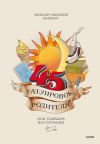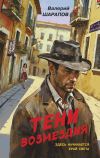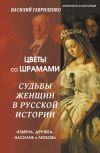Текст книги "Glimpses of Britain. Учебное пособие"
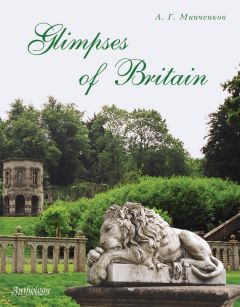
Автор книги: Алексей Минченков
Жанр: Иностранные языки, Наука и Образование
Возрастные ограничения: +12
сообщить о неприемлемом содержимом
Текущая страница: 3 (всего у книги 15 страниц) [доступный отрывок для чтения: 5 страниц]
During the Hundred Years’ War some important changes and events were taking place in England. While the king was busy with his wars, Parliament quickly developed towards its present form. The common people’s representatives got into the habit of meeting privately to discuss their business before they joined the lords. By 1350 they also had a Speaker, whose duty was to speak for them all and to express their agreed opinion to the lords. Within the next ten years the old Parliament divided into three parts: a House of Commons, a House of Lords and a small permanent council. The third body was composed of the king’s official advisers who met regularly, the others only met when Parliament was called. As the War was going on, Parliament was being constantly pressed for funds, so it met more often and gradually secured greater and greater control of the purse strings. As long as parliament supported his wars, Edward III was quite happy to increase its powers and give it complete control of the taxes.
Edward III also began to appoint Justices of the Peace. They were unpaid servants of the Crown given the local powers of the king’s sheriffs and judges.
A major event that took place soon after the accession of Richard II is known as the Wat Tyler rebellion, the Great Revolt (1381). This was a rising of the English underclass, the poor villains and wage-earners, who, unlike the other classes of society (lords, knights, squires, townspeople, freemen), weren’t represented in Parliament and whose voice couldn’t be heard in the government. The villains (or serfs) were tied to their lord’s manor and had to do feudal service on the lord’s land for three days of the week, receiving in return strips of land often scattered over several large fields. Most of them, however, weren’t satisfied with their position, willing to pay rent for their farms and objecting to feudal service. Besides, owing to the devastating effects of the Black Death, the plague that scourged the country around the middle of the 14th century, the population fell dramatically, labour became expensive, and villains, growing prosperous, could sometimes buy their freedom. Yet most were refused it and the result was bitter resentment. To make matters worse, in 1380 Parliament, to meet the cost of the French war, imposed what was called a poll-tax on the whole adult population. The amount was one shilling, to be paid by every man no matter how much he earned. This was unfair on the poor labourers, whose average monthly wage was just about a shilling. When it came to collecting the tax, there was widespread evasion. When government officials were sent into the shires to force the collection, the result was open revolt, for the tax proved to be the final straw in the list of grievances. The rebellion quickly spread throughout the country, the discontented massed in thousands, and soon their leaders emerged, Jack Straw in Essex and Wat Tyler in Kent. Everywhere the rebels went they released prisoners but above all burnt documents, anything that recorded serfdom. Landlords were seized and forced to give their villains charters of freedom. The rebellion was eventually crushed, but the ruling class had a narrow escape (several of the king’s ministers including the Archbishop of Canterbury and the Treasurer were killed) and learnt a bitter lesson. Gradually the lords gave up their claims to feudal service and accepted rent instead, which resulted in the emergence and rapid development of a class of yeoman farmers. The process accelerated with the arrival of sheep farming, for now the squire needed fewer hands and more money. Serfdom died a slow death through the following century. These changes signaled the beginning of the end of medieval England.
Another important factor that contributed to the eventual demise of the medieval order of things was the civil wars of the second half of the 15th century commonly known as the Wars of the Roses. The houses of Lancaster (the red rose) and York (the white rose) were both descended from Edward III and had equal claims to the throne of England. The last of the Lancaster kings, Henry VI, had a nervous breakdown in 1453, after which he became a pawn in the hands of whoever seized power, the victim of the rival parties who took sides in the conflict. These civil wars would never have happened if the character of Henry VI had been different. Law and justice in the political system created by William the Conqueror depended on the king making effective use of his nobles, because there was no army or police force. To make the system work the king had skillfully to choose the right allies among nobles and reward them with titles, lands and offices. His failure to do so meant that people now turned to the next best thing, the great lord whose power would protect them. So gradually the whole of England became divided up into groups loyal to this or that lord.

Warwick Castle, the residence of the Earl of Warwick
The only solution to the country’s problems was to get rid of the weak king, and this was finally achieved by Edward of York, Earl of March, descended from both the second and fourth son of Edward III. Supported by Richard Neville, Earl of Warwick, nicknamed the ‘kingmaker’ because of the decisive role he played in the conflict, Edward defeated the king’s forces and in 1461 was crowned with Warwick’s support. Then, however, Warwick changed sides and tried to bring back Henry, who was a prisoner in the Tower. Henry was restored in 1470, but in 1471 Edward killed Warwick in battle, and a few days later Henry died mysteriously. This signaled the real end of the Wars of the Roses.
Today the Wars of the Roses are often seen through Shakespeare’s plays. It was natural in the 16th century to depict the previous century as a turbulent one from which the Lancastrian Henry VII had rescued the country by defeating the tyrant Richard III and marrying the Yorkist princess Elizabeth. However, as some historians have shown, the reality of 15th century England was very different. In short, normal life went on. Towns tried to keep out of the war by avoiding taking sides. Trade continued as usual. Many of the officers of government stayed in their posts, most of the country saw no fighting at all; on one occasion only was there plunder and pillaging. There were 13 weeks of real fighting during 32 years. Numbers killed ran into hundreds and not thousands. The huge loss of life by the nobility was due to their role in battle, that of leading their knights. What really brought the Wars of the Roses to an end was everyone’s realization that a strong king was needed. The growth of that attitude was to ensure the success of the rule of first Edward IV and later that of Henry VII.
Edward IV ruled for 12 years as a tremendously successful and popular king blessed with nearly all the attributes men looked for in a monarch. When he died his 12-year-old son became Edward V. But before he could be crowned, he and his brother were shut up in the Tower by their uncle, who had himself crowned instead as Richard III. A month later the two boys were murdered, although there is no proof that Richard was responsible for this double murder. His enemies started looking for a leader. It wasn’t an easy task to find one, for all the most prominent members of both royal houses, as well as the most powerful noble families had been wiped out during the wars. Finally Henry Tudor, a powerful Welsh lord was found, whose mother was descended from Edward III. Henry accepted the offer, landed in Wales and defeated and killed Richard at the Battle of Bosworth, near Leicester. Richard’s death at Bosworth was to usher in the Tudor age, for the victor was quickly proclaimed Henry VII.
Tudor England
When in August 1485 Henry VII (1485–1509) became king it was by no means the dawn of a new age. For men at the time it merely marked yet another twist of fate. Half a century later the perception of the event radically changed: it was viewed as the beginning of a new era. That was due to two things: the success of Tudor rule and the promotion by the family itself of the idea. Actually, the reign of Henry VII was a continuation of what had gone before. It was a reversion to Edward IV. Henry VII, however, had industry, patience, powers of organization and a firm belief in the splendor of the crown. Under him that conviction was to increase, as a compensation for what he lacked most, a good claim to the throne. It was this lack of a good claim that made him start the long process of eliminating rival claimants and deliberate distancing of the monarchy from the nobility. As the victor at Bosworth, Henry was able to pass acts of attainder and thus took over his enemies’ estates, and held on to them. So many lords had been killed in the Wars of the Roses, or had lost their lands to the crown, that with the Commons’ support Henry was able to destroy their power for ever. Now the lords were forbidden by law to keep any armed followers. The royal court of the Star Chamber was given power to deal severely with any rich man who wronged his poorer neighbors. The feudal basis of society was broken completely. Henry often preferred to employ his own well-educated and trusted officials instead of noblemen. The noble families didn’t disappear, but they mixed more freely with the commercial and professional classes. Their younger sons often became merchants and lawyers.
The keynote of Tudor rule was the concentration of power in the hands of the dynasty. This changed the nature of power: it was no longer supported by armed retainers, but exercised instead through wealth and political influence at court. Men now attached themselves to a great lord who enjoyed the king’s favor. Attendance at court and an office in the household became the summit of ambition for the aristocracy. The Tudor kings saw this as a means of control and elaborated the role of the king, one already mystical in the Middle Ages, so that by the close of the 16th century the ruler enjoyed almost semi-divine status.
It was during Henry’s reign that the centre of regal power became based in the Council. This consisted of up to a hundred and fifty councillors in all: peers, lawyers, household officials and clergymen. The monarchy also needed support throughout the country and many of the councillors occupied key posts outside London. But far more important was the enhanced status given to members of the gentry, who were appointed by the crown as Justices of the Peace. Throughout the century of Tudor rule they were fundamental instruments for the execution of royal policy in the countryside. The Tudors were brilliant at going with the grain, rarely asking officials to carry out a policy to which there was overwhelming opposition.
Henry VII followed Edward IV in sharing a firm belief that sound finances were one of the keys to successful rulership. Although he died only just solvent, that in itself was a major and rare feat, achieved through receiving income from crown lands, customs and fees. He avoided expensive foreign wars, trade flourished. Instead of fighting he married his children to the royal families of Scotland and Spain. In Henry’s new national state there was no need for an army, for he ruled with popular approval. Except in the first few years of his rule, he made little use of Parliament and ruled through his council instead. It was possible only because he was a good businessman.
When Henry VII died in 1509 he was succeeded by his second son, Henry VIII (1509–1547), who promptly married his brother’s widow, Catherine of Aragon. Henry was a very gifted man, who spoke three foreign languages, was both an academic and an athlete, a talented musician and a lover of both the arts and learning. At the beginning the young king was not very interested in the day-to-day business of government. For most of the first twenty years of his reign Wolsey, the son of an Ipswich butcher, ruled the country for the king, fulfilling his every whim, while Henry indulged in one long festival. The capable and efficient Wolsey swiftly established a hold over Henry VIII which led to the king showering upon him a great number of offices both in Church and State. In 1515 Wolsey became Lord Chancellor, and later a cardinal and a papal legate, a position that gave him supreme authority over the English church, exceeding that of the Archbishop of Canterbury.
Henry VIII is popularly best known for his wives. There were six of them altogether. Henry’s marriage to the first one, Catherine of Aragon, was officially annulled in 1533. The second one, Anne Boleyn, was queen for less than three years and was executed in 1536 on a charge of adultery. The third wife, Jane Seymour, gave Henry the long-awaited son, Edward, but died in childbirth (1537). Anne of Cleves, whose marriage to Henry was arranged by Cromwell, was queen for only six months, after which the king divorced her (1540). The fifth wife, Catherine Howard, was beheaded in 1542. The last one, Catherine Parr, survived the king.
The system remained untouched, but instead of being directly controlled by the king it was run by his great minister. Wolsey’s prime task was to fulfill the king’s wish to make England a major country in Europe. All went well until in 1527 Henry decided that his marriage to his brother’s widow was sinful and sought for it to be annulled. This single decision was to cause the greatest changes England had undergone since 1066. The king’s determination on his divorce was to involve the destruction of every link with Rome, the dissolution of the monasteries, and remaking of many old jurisdictions; which, in turn, involved a great increase in the State’s power, a revolution in the distribution of property and the social structure. It’s noteworthy that all these changes were effected by active cooperation with Parliament, for Henry had no standing army, and it was with the help of the unpaid militia of southern England that he put down rebellion in the Catholic north. He acted in Parliament on a scale never known before, keeping the Commons of 1529 in being for seven years, introducing more and more of his councilors into the House, while for every blow at the Church or in every matrimonial misfortune he boldly wielded the weapons of publicity and printed appeal.
The great change needs to be viewed against the background of the Reformation in Europe. By the time Henry wanted his divorce the movement was well established in Germany under the leadership of Martin Luther, whose ideas were already reaching England. Interestingly, Henry VIII wrote a theological paper against Luther, for which the Pope gave him the title of Defender of the Faith. Luther’s ideas anticipated much of what was to happen during the coming decades: the rejection of papal authority, the abolition of religious orders, the ability of priests to marry, the right of the laity to receive the wine as well as the bread at mass or communion, the use of the vernacular for church services and the sweeping away of the cult of the Virgin and saints, pilgrimages and relics. The medieval church had preached seven sacraments: baptism in infancy, confirmation in childhood, matrimony and holy orders, penance and the Eucharist to cleanse and feed the soul, and anointing to comfort the sick and dying. Luther only preached two: baptism and the Eucharist.
Catherine of Aragon had given Henry a daughter, Mary, but all her sons died at birth, and Henry badly needed a son to succeed him. He decided that the way out would be for the Pope to declare that the marriage to his brother’s widow had been allowed by mistake and was unlawful; Wolsey and his bishops supported this view. The pope could easily have agreed, but he was under the control of Emperor Charles V, Catherine’s nephew. Henry was extremely angry. He dismissed Wolsey for failing to obtain a divorce; the latter was arrested and would probably have been executed if he had not died a natural death. Sir Thomas More was appointed a new Lord Chancellor and a new Parliament was called in 1529. At this stage, however, Henry still had no wish to break from the Roman Church. He wanted a reformed national church within the Catholic framework. Parliament consisted not only of the lords, but also representatives of the towns and shires. The great statutes which it was shortly to pass demonstrated a new partnership which set a pattern for the future. The king also benefited from the strongly anti-clerical mood in the Commons. People were envious of the church which held a third of all the country’s land. They resented paying tithes and ecclesiastical courts. The clergy resented the power of Rome.
Thus the scene was set for the king to begin his attack on the Church with the support of Parliament. In 1530 the whole clergy was indicted of unlawful jurisdiction, but two months later pardoned in return for a huge fine and the recognition of the king as supreme head of the Church of England. In 1531 Henry admitted Thomas Cromwell to his Council; he was also made Chancellor of the Exchequer. Events began to move more swiftly. Parliament attacked the church courts and they were put in the hands of the king. In 1533 Henry married Anne Boleyn secretly. In March 1533 Parliament passed an act breaking the church from Rome, in effect creating the Church of England as against the Church in England. When the old Archbishop of Canterbury died Henry appointed a reformer, Thomas Cranmer. He granted the king his divorce, Henry remarried and, in September, the new queen gave birth to Elizabeth.
The year after the Act of Supremacy transferred to the king all ecclesiastical dues formerly sent to the pope. What is surprising is how little opposition this revolution evoked. There were only few protesters, like Thomas More, but on the whole the revolution which destroyed the medieval church in England was a bloodless one.

Anne Boleyn
Now it was the turn of the monasteries. In 1535 Cromwell sent out commissioners to make a detailed review of them. Between 1536 and 1540 the monasteries, about 800, a quarter of the land of the country, were dissolved. It changed the physical appearance of the landscape. The inmates were either pensioned off or became parish clergy. Only 3 abbots resisted and were hanged. Relics and images were destroyed. The shrines were leveled to the ground. The dissolution had important social and political consequences. Two thirds of the abbey lands were sold, the rest was kept by the crown. An immense amount of land came into the possession of the middle classes. Now there were more landowners than ever before: nobility, gentry, merchants, lawyers and yeomen farmers. They gradually came to have great power, for the crown had sought alliance with them to carry through the Reformation. New previously unknown families began to join the ranks of the political йlite.

Henry VIII
The income of the crown doubled calling for new financial departments to deal with the new sources of revenue. The structure of government was changed. An inner circle developed in the Council, the Privy Council, the ancestor of today’s Cabinet. Even more significant was the place given to Parliament, especially the Commons.
By the end of the 1530s the pattern at court was beginning to take on a character it was to have in the future – a division between those who wanted no further change, and indeed wanted to go back, and those who pressed for more. The success of these rival factions changed according to the mood of the king, but in general he began to understand that things were going too far and too fast. After Cromwell’s execution in 1540 the conservatives prevailed. Under the wise influence of his sixth wife Henry was reconciled with his daughters by the first two wives, at the same time appointing Protestant teachers to educate young Edward, by his third wife, and a mainly Protestant Council to rule until Edward was old enough. He wanted a moderate council to keep the peace between the two extremes. While Henry lived he was able to control both Protestant and Catholic trouble-makers. But this policy couldn’t last for ever; England had to make a choice. Before that, however, it had to learn by bitter experience. For six years under the boy Edward the country suffered from extreme Protestants, then for 5 years under Mary – from extreme Catholics.
An interesting example of how families rose to prominence in those times is the history of the Spencer family, of which the late Princess Diana is a member. The Spencers originally came from Warwickshire, where they farmed sheep. They were successful businessmen and with each generation the family grew a little richer. By 1508 John Spencer had saved enough capital to buy the 300acre estate of Althorp. Later he acquired a coat of arms and a knighthood from Henry VIII. His descendants were no less diligent, and in the 17th century the family was one of the richest in England. Granted peerage by James I, the Spencers left farming to their agents and concentrated on court politics. In the 18th century their estate was worth £750,000 – roughly equivalent to £45 million today – and included 100,000 acres in twentyseven different counties. Lord Spencer had an income of £700 a week in an era when a gentleman could live off £300 a year (for the 18th century we usually multiply by 60 to get equivalent 20th century values).
During the reign of Edward VI radical steps were taken in the Protestant direction. First of all, the appearance of every parish church was changed. Images of the Virgin, Christ and saints were taken out, burned or smashed to bits. The wall paintings were whitewashed. By 1551 the churches had assumed the bare empty appearance which was to last until the Victorian age.
In 1549 Thomas Cranmer compiled a Book of Common Prayer. It was in English and retained much of Catholic practice, including the use of rituals and vestments. In June the same year Parliament passed an Act of Uniformity imposing its use in every church. In 1552 a second Book of Common Prayer, a more radical version, was adopted under the influence of the Duke of Northumberland. It abolished vestments and prayers for the dead, the old Catholic mass disappeared completely. Penalties were laid down for anyone who failed to use the new Prayer Book. The Latin mass was replaced by the services of Holy Communion enacted at a table in the nave. Morning prayer became the main form of worship, including psalm singing and the sermon from the pulpit. This pattern was to last into the 21th century.
The year 1552 also saw the adoption of 42 Articles of Faith compiled by Cranmer and containing the doctrine of the Church of England.
All in all, the change that occurred in the interior of the English churches and the form of worship within a period of just about 20 years (from the moment when the Church of England was created in 1533 till the end of the reign of Edward VI) was enormous and dramatic, and must have appeared all the more so for the people of the times. At the beginning of Henry VIII’s reign the experience of going to church was as it had been for centuries. The congregation gathered in the nave to hear the Latin mass. The walls and windows of the church were bright with paintings and stained glass depicting the gospel stories and the lives of the saints. There were carved images of the Virgin and saints before which candles were lit. The nave was divided from the chancel by a screen beyond which the laity didn’t pass, and above which was suspended a life-size image of Christ on the cross. Beyond lay the chancel, sacred area, with a stone altar. Sometimes near the altar there would be relics of saints, bones or fragments of clothing. The altar was adorned with rich hangings. The altar was the focus of the entire church, for on it was re-enacted in the mass each day the sacrifice of Christ on the cross. The priest wore embroidered vestments, incense was burned, and at solemn moments bells were rung. Above the altar a small piece of consecrated bread, the host, was exhibited within a suspended container called a pyx, covered by a veil.
Half a century later that experience was to be very different. Although the stained glass might still remain, the interior was virtually stripped bare, every painted or sculpted image either painted over, taken away or defaced, the walls whitewashed and adorned only with biblical texts. Over the screen there was the Royal Arms instead of the cross. Within the chancel the stone altar and pyx had gone. Instead there was a wooden table, used only sometimes when Holy Communion, which had come to replace the mass, took place. The priest was no longer attired with vestments, but a surplice. On most Sunday the service would have been one of morning prayer, said in English, and in which the congregation took part. The main focus was no longer the chancel, but the pulpit from which the sermon was delivered. A Christianity which had appealed to the eye had been replaced by one whose prime organ was the ear and whose aim was to hear and receive the word of God.
The short reign of Mary I (1553–1558), nicknamed the Bloody because of her persecution of Protestants, was a reversion to Catholicism. The queen married Philip II of Spain, the leader of the Catholic camp in Europe, a move that alienated most of the members of Parliament and provoked a rebellion in Kent. She had Parliament repeal all the Protestant acts of the previous reign, restoring religion to where it had been in 1547, and England was formally reconciled to Rome. Worse, she revived the heresy laws and brought back allegiance to the pope. As a result, about 300 people were burnt at the stake for their beliefs, including, in 1556, Thomas Cranmer. This had a strong effect on popular imagination and reinforced attitudes which were to dominate the English mind for centuries in which the Protestant faith and independence of a foreign power were firmly linked. Mary further alienated the people by trying, and, tellingly, failing, to change land ownership: the attempt met with huge opposition. The final catastrophe was the unpopular war with France. It was a complete failure and Calais, England’s last outpost on the mainland, fell to the French (1558). Thus, when Mary died a Protestant settlement was seen as the only possibility that could offer security. Her persecution of Protestants and alliance with Spain and Rome helped create the myth of England as the New Jerusalem. The accession of a new queen whose Protestant sympathies were well-known was seen as an act of divine deliverance.
Several important developments that took place in late medieval England had their effect on domestic building. First of all, the revolution in the English Church meant that a lot of church property including the monastic buildings came into the hands of landowners and the Crown. The landowners among whom were yeomen farmers were further enriched by rents and wool sales resulting from the arrival of sheep farming and the decline of serfdom. Another important factor was the arrival of new building materials: bricks and glass. By the 1520s English brick making was already well developed. Last but not least, the Italian Renaissance had its influence on Tudor England. Italy was the ultimate source of the new style, but it increasingly arrived in England via France and the Low Countries, more so as the Reformation soon drove a wedge between Italy and England. Truly Renaissance architecture came only a century later. In Tudor England there was no interest in or understanding of the fundamental principles of Renaissance architecture. Whether it was a brand-new house, a converted monastery or an updated castle, there was no sign of the Renaissance ideals of proportion and a unified whole. The Tudor style, as the first English Renaissance style came to be called, prevailed during the reigns of Henry VII, Henry VIII, Edward VI and Mary I. It was the first of the transitional styles between Gothic Perpendicular and Palladian architecture, which basically took over from the Italian Renaissance the new decorative repertory, just several isolated features, such as, for example, the roundels of the Roman emperors on the facade of Hampton Court Palace. [32] The early Tudor country house, in spite of the use of antique decoration, retained its late medieval appearance, including a moat, crenellation, chimney stacks, turrets and towers.
In England the appearance of the new style in domestic architecture occurred within the orbit of the court. The tone was set by the monarch, first and foremost by Henry VIII. A great transformation occurred in the 1530s and 1540s, carried through on the vast wealth confiscated from the Church. In 1509 Henry VIII had inherited 13 palaces and houses; when he died in 1547 he left 56 residences densely concentrated in the south-east. The most important of these residences were Hampton Court, Whitehall, Nonsuch, Richmond Palace and Greenwich Palace. Ј62,000 (about Ј18 million in today’s money) was spent on Hampton Court, Ј43,000 on Whitehall and Ј23,000 on Nonsuch. These palaces were to provide the setting for the monarchy until the Civil War; most of them have not survived: Whitehall, for example, burnt to the ground in 1698, while Nonsuch was demolished in the late 17th century. Hampton Court is undoubtedly the finest example of a well-preserved Tudor palace. It was originally built for Wolsey and later transformed for Henry VIII. [30; 31]
Hampton Court has all the typical features of what is sometimes called a Tudor courtyard house. The courtyard house is a domestication and regularization of the free-shaped medieval castle. It was at first H-shaped, but in the second half of the 16th century gradually became E-shaped. With its low four-centered archway, pepperpot corner turrets, bay or oriel windows [33], the courtyard house was to become the model not only for Hampton Court, but also for St. James’s Palace, Eton, many colleges of Oxford and Cambridge and numerous manor houses. The rise of new trading and sheep-farming families to wealth resulted in the building of many manor houses. In these the fortified character of earlier times gave way to increased domesticity and privacy. The owners themselves were essentially the designers. Though the Great Hall still remained the focus of the building, its importance now decreased with the introduction of other rooms fitted with oak paneling. Domestic exteriors exhibited mullioned windows, four-centered arches, pinnacled gables, bay or oriel windows, and numerous chimneys of decorative form. The royal palaces would have pinnacles on which sat the inevitable royal beasts. The finest examples of Tudor manor houses are Sutton Place, Surrey and Compton Wynyates, Warwick.
Elizabeth I (1558–1603) came to throne with the nation at war, the treasury empty and the people bitterly divided on religion. The young queen thus faced a formidable task – to reach a compromise between people of different faiths, to pacify the country, to solve the financial problems of the Crown and merely to survive in a largely hostile Catholic Europe.
Правообладателям!
Данное произведение размещено по согласованию с ООО "ЛитРес" (20% исходного текста). Если размещение книги нарушает чьи-либо права, то сообщите об этом.Читателям!
Оплатили, но не знаете что делать дальше?




